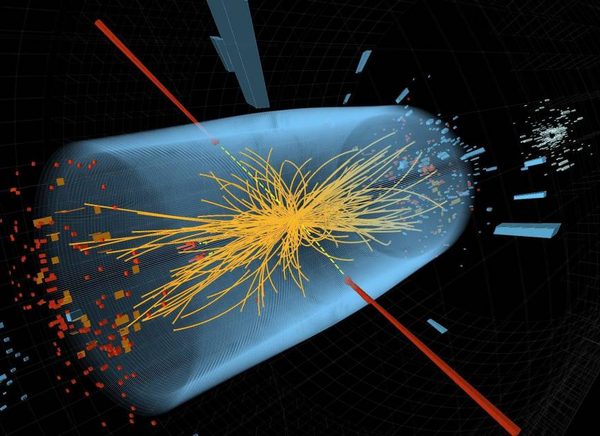Englert and Higgs receive Nobel Prize in Physics 2013-2

SNOLAB congratulates François Englert and Peter W. Higgs for their receipt of The Nobel Prize in Physics 2013 “for the theoretical discovery of a mechanism that contributes to our understanding of the origin of mass of subatomic particles, and which recently was confirmed through the discovery of the predicted fundamental particle, by the ATLAS and CMS experiments at CERN’s Large Hadron Collider.”
Canada’s contribution
The search for the Higgs Boson was a truly international effort involving thousands of people, including many Canadian scientists and engineers. The ATLAS experiment was built by groups from more than 150 universities and laboratories in 35 countries. Each group built part of the detector, applying its own local expertise and resources, and contributed research funds to common construction and operating expenses.The contributions made to the Large Hadron Collider (LHC) and the ATLAS experiment were applied through TRIUMF – Canada’s national laboratory for particle and nuclear physics.
What exactly is the ‘Higgs’?
The Higgs boson is a subatomic particle (a particle smaller than an atom although may have more mass than an atom) that has been the subject of an intense scientific hunt at the European Organization for Nuclear Research (CERN). In 2012, scientists at CERN, working on the ATLAS and CMS projects, announced they had finally detected the long-sought particle. Everything we see around us is made of atoms, inside of which are electrons, protons and neutrons and those, in turn, are made of quarks and other subatomic particles. Scientists have wondered how these tiny building blocks of the universe gain mass, because without mass, the particles wouldn’t hold together — and there would be no matter.A theory proposed separately by Higgs and Englert is that a new particle must be creating a “sticky” energy field that acts as a drag on other particles. The ATLAS and CMS experiments at CERN confirmed that this particle exists in a form that is similar to — but perhaps not exactly like — what was proposed by the scientists, the Higgs particle!
Why does it matter?
The Higgs particle is part of many theoretical equations strengthening scientists’ understanding of how the world came into being. If the particle didn’t exist, then those theories would have needed to be fundamentally overhauled.The fact that it does exist gives more weight to the Standard Model of particle physics, which explains how much of the universe works at the subatomic level. There is still work to be done, especially in the field of neutrino and dark matter research. Neutrinos were previously thought to be massless (we now know that they do in fact, have mass) and researchers are still looking for dark matter, a yet unseen particle that is thought to make up almost 25% of the mass of the universe. The science programme at SNOLAB hopes to solve some of these mysteries in the coming years. Stay tuned!
More information about TRIUMF.
More information about the ATLAS group.
Image courtesy of CERN.The red lines depict traces of two high-energy photons while the yellow lines show tracks of other particles produced in the collision.